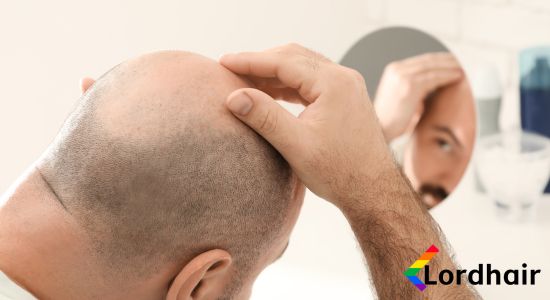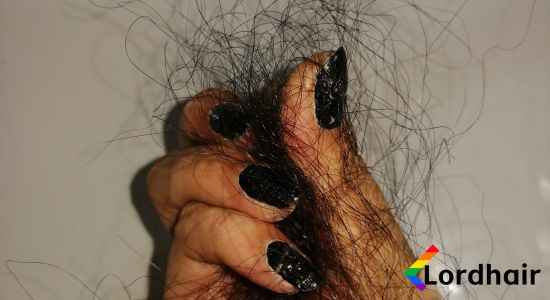Disability and Hair Loss
- Written by Ray Fernandez
- | Published Dec 28, 2023
- |
- 3 min read
 Listen to the full text
Listen to the full text

It may be almost the end of the month but December acknowledges Disability Awareness Month and serves as an opportunity to shed light on the challenges faced by individuals with disabilities. While disabilities are diverse and can affect various aspects of one's life, there are lesser-known connections between certain disabilities and hair loss.
Thant's why, Lordhair - a global trusted brand for hair system - will explain the link between specific disabilities and hair loss, emphasising the need for increased awareness and support in addressing this lesser-discussed aspect of disability.
Alopecia and Autoimmune Disorders
Alopecia is an autoimmune disorder characterised by hair loss. Autoimmune disorders, such as lupus and rheumatoid arthritis, often occur alongside alopecia, necessitating a better understanding of these connections. Increased awareness of the symptoms and management of alopecia within the broader context of these disabilities will provide valuable support to affected individuals.
Cancer, a debilitating illness affecting numerous individuals worldwide, is often accompanied by treatments like chemotherapy. Hair loss is a prevalent side effect, impacting not only patients' physical appearance but also their emotional and psychological well-being. Recognising the relationship between cancer-related hair loss and disability ensures that comprehensive care addresses the unique challenges faced by patients.

Stress and Mental Health Disorders
Hair loss can also be linked to stress-related mental health disorders, such as anxiety and depression. These disabilities can significantly impact an individual's quality of life, manifesting in various physical symptoms, including hair loss. By fostering understanding between mental health challenges and hair loss a more holistic care can be implemented for those affected.
Trichorrhexis nodosa is a hair disorder characterised by weak hair shafts that are prone to breakage and splitting. It can be either congenital or acquired, with congenital trichorrhexis nodosa being present from birth and often running in families. Acquired trichorrhexis nodosa can result from factors such as excessive heat styling, chemical treatments, or environmental exposure. Common symptoms include brittle hair that breaks easily, the presence of nodules or thickening along the hair shafts, hair frizziness, and thinning.
Ectodermal dysplasia, on the other hand, is a group of genetic disorders that affect the development of ectodermal derivatives, such as hair, teeth, nails, and sweat glands. There are over 50 different types of ectodermal dysplasia, each with its unique set of symptoms and severity. Symptoms commonly include sparse or absent hair, missing teeth or abnormal tooth development, abnormal nails, and reduced or absent sweat glands. This condition is usually inherited from one or both parents.
Medications and Hair Loss
Many medications commonly prescribed for disabilities, such as anticonvulsants and certain psychiatric drugs, may lead to hair loss as a side effect. Recognising the potential impact of these medications on hair health highlights the need for careful monitoring and consideration of alternative treatments, if possible. Awareness regarding medication-induced hair loss also fosters open discussion between healthcare professionals and patients, enabling individuals to make informed decisions about their overall well-being.

Genetic Disorders and Hair Loss
Trichorrhexis nodosa is a hair disorder characterised by weak hair shafts that are prone to breakage and splitting. It can be either congenital or acquired, with congenital trichorrhexis nodosa being present from birth and often running in families. Acquired trichorrhexis nodosa can result from factors such as excessive heat styling, chemical treatments, or environmental exposure. Common symptoms include brittle hair that breaks easily, the presence of nodules or thickening along the hair shafts, hair frizziness, and thinning.
Ectodermal dysplasia, on the other hand, is a group of genetic disorders that affect the development of ectodermal derivatives, such as hair, teeth, nails, and sweat glands. There are over 50 different types of ectodermal dysplasia, each with its unique set of symptoms and severity. Symptoms commonly include sparse or absent hair, missing teeth or abnormal tooth development, abnormal nails, and reduced or absent sweat glands. This condition is usually inherited from one or both parents.
Disability and Hair Loss: Final Thoughts
Disability Awareness Month provides an ideal platform to broaden the scope of discussions surrounding disabilities, ensuring that hair loss, often overlooked in the disability narrative, is acknowledged and addressed. By understanding the link between certain disabilities and hair loss, we can foster awareness, compassion, and support within communities, improving the overall quality of life for individuals living with disabilities.
Through increased research, education, and advocacy, we can debunk misconceptions surrounding hair loss in the context of disabilities. Additionally, by incorporating hair loss considerations into disability support systems, healthcare professionals can deliver more personalised care to affected individuals. Ultimately, this increased understanding and awareness will empower individuals with disabilities to navigate their unique challenges with confidence and dignity throughout their hair loss journey.
Remember, hair loss is generally not considered a disability on its own, but it can be a symptom of an underlying medical condition that may be considered a disability.
Ray is a guest contributor to our blogs with an extensive background in PR. Ray loves to discuss his own hair systems (also commonly known as men’s human hair wigs, hair toupees, hair units, and men’s hairpieces) journey by offering insights into wearing and styling a toupee wig as well as providing observations on the role of hair in sexual and gender identity from an LGBTQ+ perspective. Be sure to check out more of Ray’s Diversity content.



